
Two sides of a coin – such is the tale of independence. As India and Pakistan celebrate their freedom in August, one is forced to contemplate – “Freedom from whom?”. The British rule ended in 1947 and is indeed a reason to celebrate but for the entire Western front, Punjab, Rajasthan and Kashmir, it was a time when hate begot hate. Generations of neighbors who grew up playing together, picked arms against each other.
In the dilapidated rooms along the periphery of Rambagh Samadhis (Srinagar, India) – the Cenotaph of Gulab Singh (1772 – 1857 AD), since 1947 a few Sikhs have been spending their life, forgotten by the society, a stark reminder to the negative impact of independence.
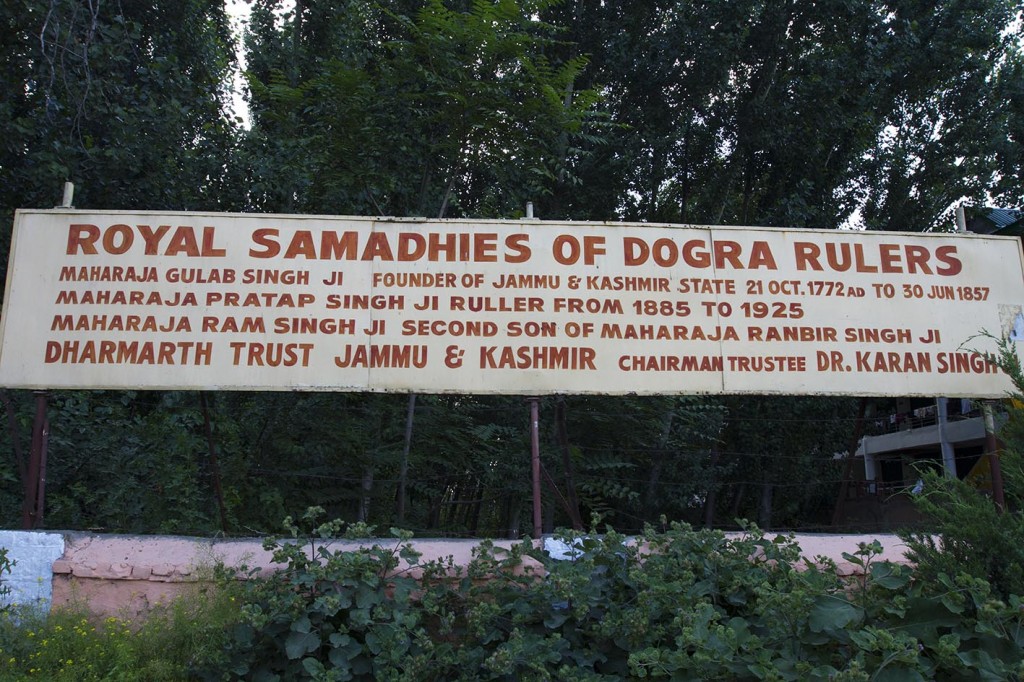
Photo : Rambagh Samadhis, Srinagar.
Gulab Singh (1792 – 1857 AD), the Dogra chief from Jammu, served Maharajah Ranjit Singh (1780 – 1839 AD), who was driven by the zeal to form a kingdom that would for the first time stop the Central Asians / Afghans from invading the Indian sub-continent. After the demise of Maharajah Ranjit Singh, Gulab Singh in 1845 AD betrayed the Sikh kingdom by partnering with British, blocking access of Sikh army to military supplies required in the battle to stop the British advance into Punjab. This was an act done in return for the right to purchase an independent rule of Kashmir, for a sum of Rs. 75L. Gulab Singh paid the amount to British from the treasury of the Sikh kingdom at Lahore.
I get a feeling that the Sikhs now staying in the periphery of Gulab Singh’s cenotaph are subtly demanding an answer for his betrayal of the Sikh kingdom. However in reality they are just the victims of 1947 independence.
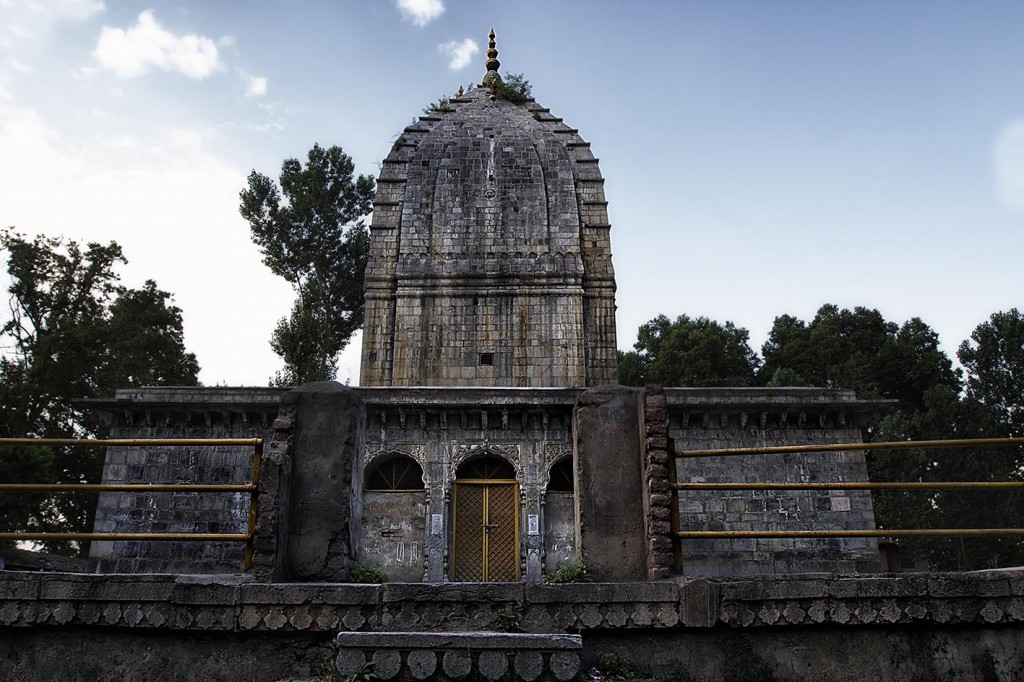
Photo : Cenotaph of Gulab Singh (1772 – 1857 AD).
Here I met two siblings, Ishar Singh (89 years) and Uttam Kaur (86 years). They are the only surviving children of Sunder Singh (expired), cousin of the noted Sikh reformer, Akali Kaur Singh (1886 – 1953 AD). This family belonged to Village Paddhar of Chakar, now in Pakistan controlled Kashmir. Their ancestor, Triloknath, a Hindu Brahmin, in 1675 AD came with a delegation from Kashmir to meet Guru Tegh Bahadur (9th Sikh Guru) in Punjab, seeking protection from prosecution by Mughals.
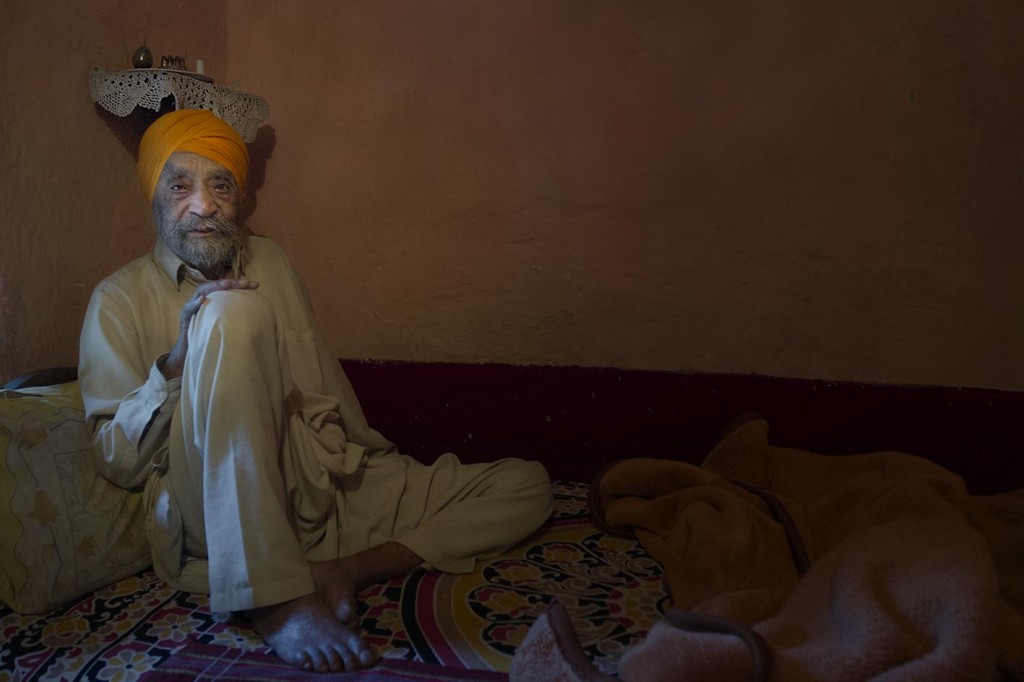
Photo : Ishar Singh (89 years).
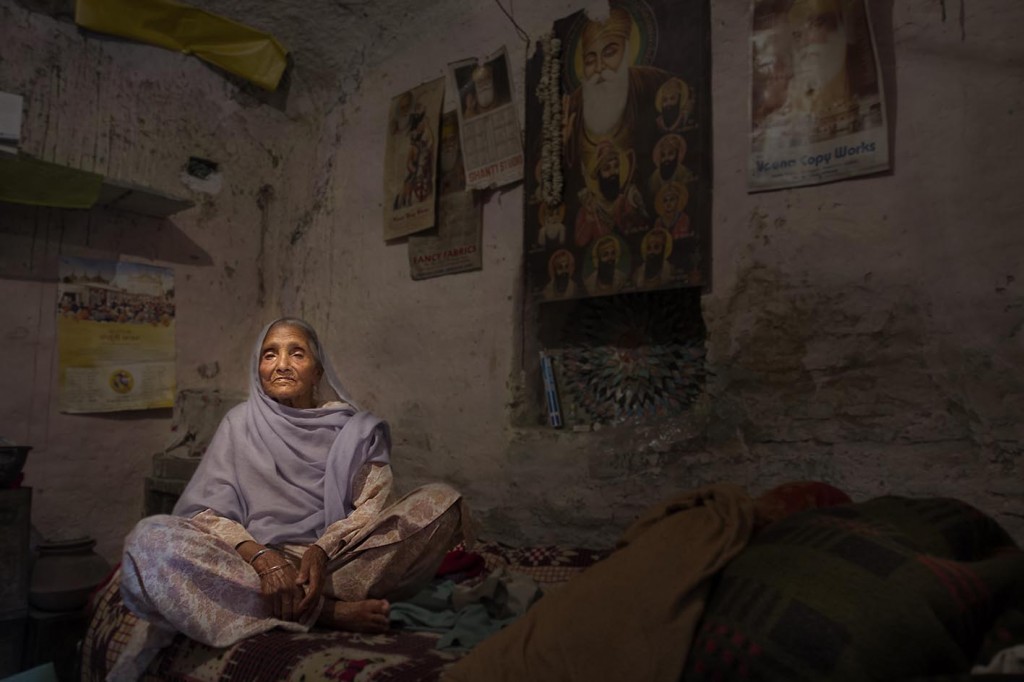
Photo : Uttam Kaur (86 years).
Ishar Singh, now a frail man, suffering from partial dementia, is a man with smile, though lost in his own world. The entrance to his room, around the cenotaph, had a small plate with his name partly visible. From the look on his face it appeared we were probably the only ones to have ever stepped into his room with a curiosity to dig his past.
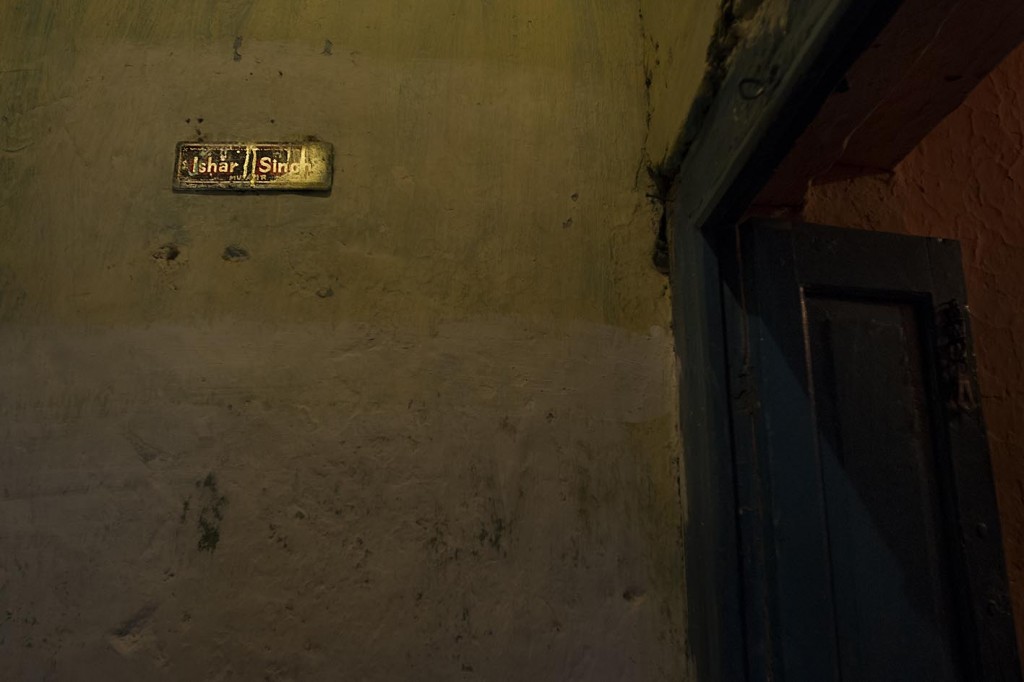
Photo : The name plate outside Ishar Singh’s room.
As per Indian Independence Act of 1947, the Maharajahs of independent princely states had the right to choose merger with India / Pakistan or remain independent. With independence in Aug 1947, communal riots broke out in Punjab. Maharajah Hari Singh of Kashmir chose to delay his decision and it gave an opportunity to Kabalees (Tribesmen) to attack Kashmir with an objective to merge it with Pakistan.
Ishar Singh recalls the slogan of Kabalees (Tribesmen) who attacked his village at Chakar.
Hindu ka Zar
Sikh ka Sar
हिंदू का ज़र
सिख का सर
Translated it means, plunder the wealth of Hindus and behead the Sikhs.
In this attack, Ishar Singh witnessed three of his brothers and one sister being massacred by the Kabalees (Tribesmen). One brother and two sisters (Uttam Kaur being one of them, finally moved to India in 1952) were left back in Pakistani Kashmir.
Today, under dementia, so frail is Ishar Singh that he could not recall the name of his brother and sister left back in Pakistani Kashmir. On being requested to recall, all he could recollect was that his brother remained in communication through letters till 1951. The last letter bid Ishar Singh the final farewell. What happened to his brother thereafter is anyone’s guess.
Having escaped the attack by Kabalees (Tribesmen), Ishar Singh moved to Srinagar (India) in 1947 and stayed across refugee camps, finally finding his way to the current residence around the cenotaph of Gulab Singh.
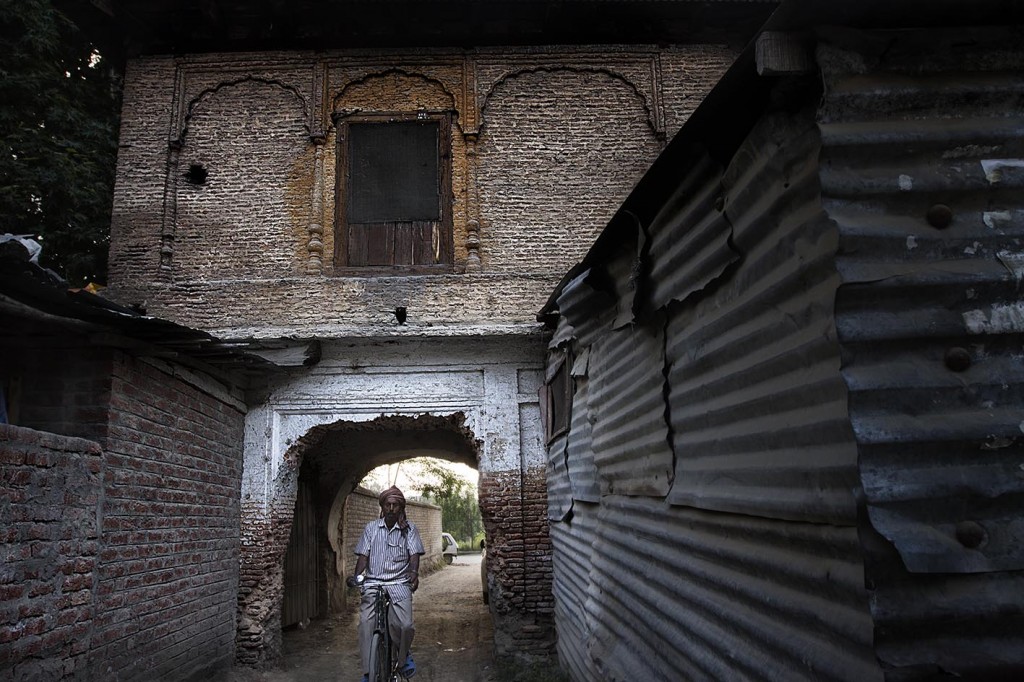
Photo : Residences around Cenotaph of Gulab Singh.
Next to Ishar Singh’s room lives Uttam Kaur, his only surviving sister from the holocaust of partition. We entered the room to find an aged lady, scarred with passage of time. She was just 19 years, when Kabalees (Tribesmen) attacked Chakkar village. Uttam Kaur chooses to be silent about the 5 years of her life that she was left behind in the newly created Pakistan. Parted from her family, she finally found her way to India. In 1952 she was one of the few girls from Pakistani refugee camp, who were exchanged for Muslim girls from the camps in India.
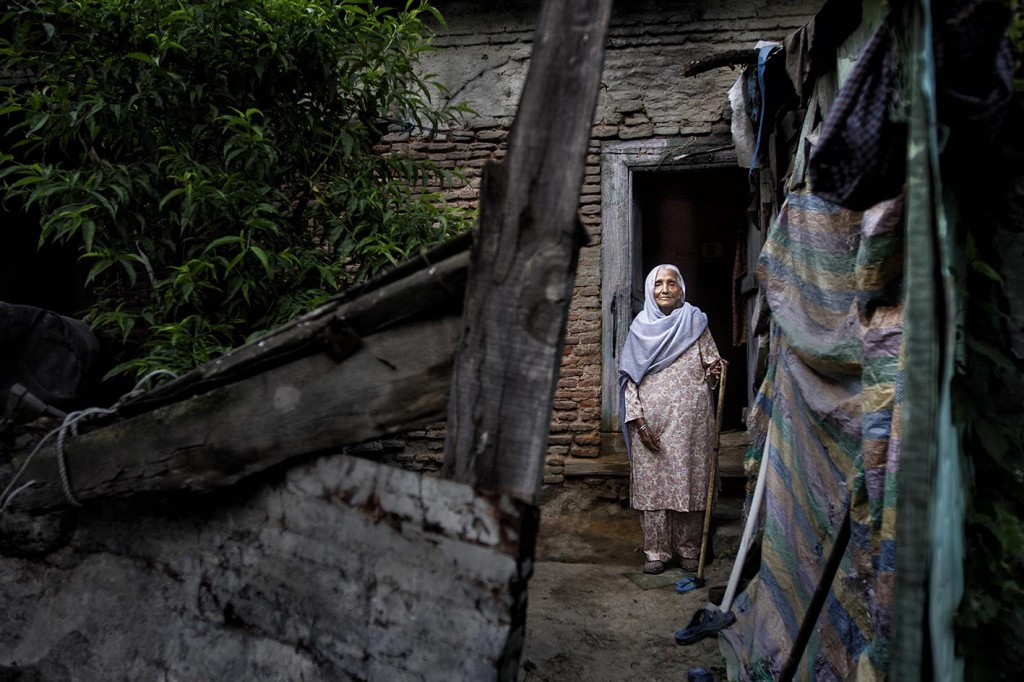
Photo : Uttam Kaur’s dilapidated residence.
Under the refugee exchange program, Uttam Kaur crossed the border from Lahore and stayed in Amritsar for 7 days, thereafter reaching Jammu. Here she was finally united with her brother, Ishar Singh. In 1953, she married Sohan Singh at Srinagar and has since been staying next to her brother’s room, in the periphery of the Cenotaph of Raja Gulab Singh.
Filled with sorrow are such tales from both sides of the border. Both nations celebrate partition with all pomp and show, with most having forgotten the other side of the coin – the last few surviving victims of the partition, an aging generation that witnessed the pain. Soon there will be none left to share the stories and finally the two nations can then celebrate the real joy of independence!

Comments(31)
Jaswinder Singh says:
August 18, 2014 at 11:39 PMA very sad tale from the thousands left undocumented…
Troy Harris says:
August 18, 2014 at 11:44 PMHow can we expect an ’empty tomb’ (cenotaph) to engender that much community attention? Fine essay and photos as always.
saleemlodhi says:
August 19, 2014 at 12:26 AMMy family had to face similar holocaust while leaving their beloved city Samba Jammu. My aunt with 5 year baby girl is missing since then.The partition was a tragedy selfish poltical elite is responsible but they are still enjoying the fruits of so called independence whereas the poor masses are suffering on both sides.
Harpreet says:
August 19, 2014 at 1:17 AMSad for Sikhs, who were robbed of culture, heritage sites, valuables and peace.
May God bless the departed souls.
Karamjeet Singh says:
August 19, 2014 at 1:52 AMIt is a matter of your great consideration to have brought out a story of silent suffering displaced persons of Indo-Pak partition.It is considered to be one of great trail of tears in History for Sikhs and Bangalese.If the partition was coming it could have been handled more humanely by deploying troops and peaceful exchange.It was left to folks to push out each other voilently and the saga of partings and sufferings happend.As rightly said Political elite on both sides benefited and have their Swiss Banks accounts.Did we learn anything? none and continue revel in celebration without looking back.
Nice pictures and nice essay.
Amrita Sehdave says:
August 19, 2014 at 5:19 AMVery well written.
Ajeet Kaur says:
August 19, 2014 at 5:20 AMVery nice.
Jasmeet Kaur says:
August 19, 2014 at 5:21 AMThought provoking. Well written.
Ravinderpal aur says:
August 19, 2014 at 5:25 AMExcellent.
Harbans Singh Khakh says:
August 19, 2014 at 5:34 AMFather used to say Azaadi nahin barbaadi mili. “not independence but destruction”!
Bhabishan Singh Goraya says:
August 19, 2014 at 7:23 AMਗੱਦਾਰ ਗੁਲਾਬ ਸਿੰਘ ਡੋਗਰੇ ਦੇ ਮੜੀ ਦੁਅਲੇ ਰਹਿੰਦੇ ਸਿੱਖ ਪ੍ਰਵਾਰਾਂ ਵਿਚ ਹੈ ਅਕਾਲੀ ਕੌਰ ਦਾ ਵੀ ਟੱਬਰ।
Milton D'Silva says:
August 19, 2014 at 7:24 AMWell a sad story, a poignant tale – and what is the story of India without the many betrayals?
Satsangi N P says:
August 19, 2014 at 8:40 AMSAD
Surupa Chatterjee says:
August 19, 2014 at 10:19 AMBeautifully described poignant tale of tragedy of the partition and yes both sides will be as you said really free when these last faces of the history are no more….Salute you for going there and bringing all these hidden tales for us….The lingering pain was so evident , so is the loneliness….it came through..through your words and visual captures…
amarjeet kaur says:
August 19, 2014 at 11:30 AMOh! Really you have enlighten a sad story with photographs. Really this story makes us like crying. We always heard this type of tales by our parents that how could they escaped to India from Abbottabad (now in Pakistan).Really touching.Thanks for so effectively written and given photographs
Mohindra Chadha says:
August 19, 2014 at 12:55 PMA very sad story of suffering left after partition of the country. THE HUMAN ANGLE IS THE KEYNOTE of this beautifully written and photographed tale.
bikram says:
August 19, 2014 at 3:07 PMThere are many untold stories about sufferings of sikh community in kashmir before and after partition.This being one of them.We have lost a complete generation who lived with such horrific tales/stories.Great service to community by bringing out the leaf out of obscurity.
Colonel RS Mogil says:
August 19, 2014 at 3:20 PMDEAR AMARDEEP,
YOU HAVE BROUGHT BACK, THE MOST SORROWFULL PAST OF OUR HISTORY.
FIRST, THE BETRAYAL BY RAJA GULAB SINGH TOWARDS THE SIKH EMPIRE.
SECOND THE BETRAYAL OF BOTH INDIANS AND PAKISTANIS BY THEIR SO CALLED POLITICIANS/RULERS.
THERE IS ONLY ONE SIDE OF THIS COIN- THE SELFISH MINDS OF THE POLITICIANS/RULERS.
THE REAL CULPRIT WERE THE BRITISH ,WHO ,WHEN THEY FELT THEY HAVE TO LEAVE, WANTED INDIA TO BE DIVIDED SO THAT IT GOES ON FIGHTING AGAINST ITS PARTS. THEY CONTINUE TO DO SO EVEN NOW.
IN THE THEORY OF ‘KARMA’ , THE BRITISH EMPIRE HAS ALSO ENDED. EVEN IRELAND IS SEPARATED, SOME DAY THERE WILL BE MORE ASIANS/AFRICANS IN ENGLAND THAN THE ENGLISH ORIGIN PEOPLE.
INDEED YOUR STORY AND WRITING HAS TOUCHED MANY SOULS ABOUT HUMAN TRAGEDY , WHICH CAN NEVER BE SOOTHED. SOLVED
REGARDS,
COLONEL RS MODGIL.
Gurpreet Singh Sudan says:
August 19, 2014 at 5:31 PMbeautifully written…………..
Dipika Sen says:
August 19, 2014 at 6:26 PMfeeling pained for them…:-(
Dr Daljit Singh Sethi says:
August 19, 2014 at 7:01 PMYou have taken me down the memory lane when my father now nearing 90 narrated to me how he being the youngest of 8 brothers in the family was the only one to cross over with his mother and sisters. The rest were all butchered in one night. All this sacrifice in vain as we are still in search of that elusive homeland in the so called free India which has for the last 60 yrs remained a slave to vices of its own creation.
lalli brar says:
August 19, 2014 at 7:16 PMThanks,,
Rajinder singh says:
August 19, 2014 at 9:04 PMDEAR AMARDEEP,
AURANGZEB DI KABAR AND GULAB SINGH DI SAMADHI IKO JIHEY LAG RAHEY NEY.
OUR RULLER AND POLITICIAN SHOULD LEARN FROM HISTORY.
YOUR DETAIL IS AN EYE OPENER.
REGARDS
RAJINDER SINGH
Arjit Mahal says:
August 20, 2014 at 4:19 AMDear Amardeep: Your essay and photos give us a glimpse of the betrayals, survival and hope. Very nicely depicted the Nature’s Human Drama.
Salman Rashid says:
August 21, 2014 at 2:48 PMThe greatest tragedy of modern times was not the highly-trumpeted, billed and flaunted Holocaust; it was the Partition of India. Only we who directly suffered through that great injustice know its real magnitude. Unlike the Holocaust that ended with the defeat of Nazi German, the effects of Partition live on, their ugly face mainly being the militarization of India and Pakistan; of the continuous hatred at the official level and the separation of people of one race and language, the Punjabis, on the basis of religion.
Amandeep says:
August 22, 2014 at 2:22 AMIndeed, there are two sides of a coin. Well written and beautiful photographs.
kishore kumar biswas says:
August 23, 2014 at 2:10 AMOur history and Their history do not tell the story of ” Another ” who fell victim by the both. The celebration of ” political ” independence denies the wastage of human life . As the celebration is to glorify the victory of political ambition not of ” independence ‘. That heinous ambition is presented with glossy lie of ” independence “. They wrote the history glorifying the politicians erasing the loss of common people . The people who were killed , ousted from their roots , who were running for life helplessly. The decision was planned and taken by the politicians who did not have to run for life , they just have to pack up to shift elsewhere and to be settled with glory. People were left with sudden unimaginable change in there life to accept. All on a sudden they find there is no place for them in the world. In panic and blind rage mayhem started in their life while the political leaders who took the decision of ” partition ” celebrating ‘ independence ‘with pomp and glory. People became homeless , died , violated , separated from dear ones . A simple humble history of common people just got erased.They were thrown into the bins of history . But is it lost for ever ? No , it cannot. Six decades gone away from that moment . Still the soil of this subcontinent is carrying the bloodstains of innocent people. the air of this country still blows with the cry of helpless people. The saga of many Ishwar Singhs suddenly comes up to remind that there is dark dried bloodstains under this glossy independence.
Both the part got a ” cursed ” independence . It did not bring peace on both sides. It was destined to be a doomed independence. Both are living a life of crippled diseased life , infected with rotten wounds , infested with dirty politicians.
Our ” independence ” is suffering as it is born of ” sin ‘.
Amardeep here depicts the saga of the human being who were the victim of the sin of others.
Gurpreet Singh Anand says:
August 25, 2014 at 11:26 PMBoth sides of the coin have same figures- same stories .This epic silence that has cowed down the effected souls has scars both on bodies and souls and runs through generations .I am honestly indebted to Amardeep ji for having brought forth forgotten real people who sacrificed their everything for the so called freedom of India that nobody acknowledges – Isn’t this India’s “Silence of The Lambs ” we do not want to talk of ???
Once again cannot resist ,but sharing, this well written peace from deep down sufferers hearts .
Harbans Lal says:
August 26, 2014 at 8:38 AMWhen we read heart breaking stories of our recent past, like this one, they arouse strong emotions. May we use the emotions these terrible shocks of the past invoke in us to pledge, NEVER AGAIN. Can people of both Pakistan and India join in silent prayers and in louder prayers? Can they join hand in determination to pledge their actions towards NEVER AGAIN? Can we accept people as they are and give up any notion of dividing humanity into “US” and “Them” as Guru Ram Das asked us to do some centuries ago? YES, WE CAN. I do not see any alternative other than annihilation of our civil societies. Let us think of way as to how to put these words into practice.
sukhbir says:
September 21, 2014 at 9:16 PMWords cannot describe the deep pain. I am from a generation after partition. Yet such stories always have an impact in me.
Geetali says:
September 22, 2014 at 12:55 PM“Hindu ka Zar
Sikh ka Sar”
That is true and blood-curdling. A Sikh was known for his valour, so the only way to stop him was to cut his head off.
Thank you for some beautiful images, and more than that, your beautiful write-up, so sensitive and poignant.